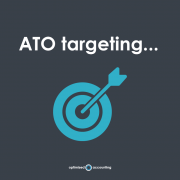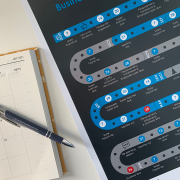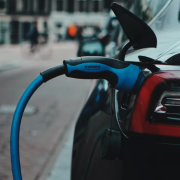
Using your car for work purposes? Here’s what you need to record depending on the method used, including your car log book, what you can claim and for how long.
If you’re an employer, read our FBT guide and how to ease the process of gathering records from your employees.
What to record in your car log book
Remember: if you want to claim expenses on a car that you own (not the business you work for), you can only use the logbook method.
You can record the below details in an electronic or pre-printed logbook (available from stationery suppliers).
For each journey, record the:
- The date travelled
- Odometer reading at the start of the trip
- Odometer reading at the end of the trip
- Number of kilometres travelled during each trip (calculated from the above)
- If the trip was work-related or private. Travelling from home to work and back is NOT classified as work-related.
- So long as the business pattern of use doesn’t change significantly, it’s valid for 5 years.
For each car that you wish to claim must contain:
- the starts and end dates of the logbook period
- the car’s odometer readings at the start and end of the logbook period
- the total number of kilometres the car travelled during the logbook period
- the odometer readings at the start and end of each subsequent income year your logbook is valid for
- the business-use percentage for the logbook period
- the make, model, engine capacity and registration number of the car
Other records you need to keep:
- evidence of your actual fuel and oil costs, or odometer readings from which you can estimate your fuel and oil use.
- evidence of all your other car expenses.
Logbook timeframe
If this is the first year you have used the logbook method, you must keep a logbook for at least 12 continuous weeks during the income year. That 12-week period needs to be representative of your travel throughout the year.
If you started to use your car for business-related purposes less than 12 weeks before the end of the income year, you can continue to keep a logbook into the next year so it covers the required 12 continuous weeks.
Each logbook you keep is valid for five years, unless your usage changes dramatically, in which case you’ll need to record another 12 weeks in your log book.
If you establish your business-use percentage using a logbook from an earlier year, you must keep that logbook and maintain odometer readings in the following years.
How to work out what percentage you can claim
(Distance travelled for business / Total distance travelled) x 100
You can then use this percentage to claim for all car expenses.
Example: Traveling for work
At the end of the income year, Tim’s logbook shows he travelled a total of 11,000 kilometres. Of these, 6,600 were for business-related purposes.
To work out the percentage of car travel used for business-related purposes, Tim made the following calculation: 6,600 ÷ 11,000 × 100 = 60% of travel was for business-related purposes.
Tim’s total expenses, including depreciation, are $9,000 for the income year. To work out how much he could claim as a deduction, Tim completed the following calculation:
$9,000 × 60% = $5,400
What expenses can I claim?
- registration
- insurance
- servicing
- repairs & maintenance
- car wash
- fuel & oil
- deemed depreciation
- deemed interest
- lease costs (if you’re leasing the car from a third party)
What about the actual cost method?
This is the only method you may use if your business is a:
- company or trust, regardless of the type of vehicle you’re claiming for
- sole trader or partnership, if you are claiming for other vehicles such as a motorcycle or a van
You’ll need to supply the following:
- The distance in kilometres you’ve travelled for business and private purposes, including the same detail as from the logbook method above
- All receipts and invoice expenditures for maintaining your car, including fuel, repairs, servicing etc.
- Loan or lease documents
- Registration documents
- How you calculated your claim
What differentiates the logbook method from the actual costs method is that you need to record all of your driving through the year.
In contrast, the logbook method only requires 12 weeks.
Tracking cents per kilometers method
This is only relevant for sole traders or partnerships, where at least one partner is an individual. It uses a set rate for each kilometer travelled for business (which you can find on the ATO info page).
All you need for this method:
- Total kilometers driven
- Percentage of kilometers travelled for business purposes
- Evidence that you own the car, because it factors in depreciation, registration, insurance, fuel and maintenance
- While you don’t require exact evidence for how many kilometers you travelled, you may need to prove how you calculated your business kilometers, such as through an automatic logbook application or diary records.
The calculation:
Total business kilometers travelled x the rate.
As usual, remember to hold onto your records for 5 years in case of audits.
Some of this article was originally published on the ATO website, which can be found here.










